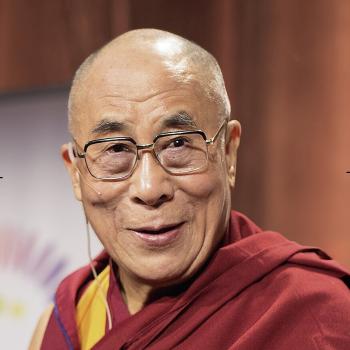Intrinsic and extrinsic are the two orientations measured in the Allport Religious Orientation Scale. Also called the Intrinsic/Extrinsic Scale (I/E), the Religious Orientation Scale was published in 1967 by psychologists Gordon Allport and J. M. Ross. Rather than measure beliefs or practices, the ROS measures attitudes, intentions, and motivations. The scale explains how different people following the same religious tradition can follow it so very, well, differently.
The scale proposes that people connect with, or orient themselves toward, religion in two basic ways:
- The extrinsic orientation values religion as a means to an end. The “end” may be personal or social, such as gaining social acceptance or praying for something one wants.
- The intrinsic orientation values religion as its own “end.” Religion is something personal and intimate. Intrinsic individuals internationalize the teachings of their religious tradition and make them central to their life journeys.
Of course, many people who follow a religious tradition fall somewhere along the middle of the scale and exhibit characteristics of both orientations. An individual’s place on the scale usually is determined by responses to twenty statements, half representing an intrinsic view and half an extrinsic view. By rating these statements on a scale, those being tested provide a window into their personal orientation.
Development of the Religious Orientation Scale
Gordon Allport (1897-1967) was one of the most influential psychologists of the 20th century. He is best known for his work on the psychology of personality. Very simply, Allport saw each individual as unique and distinguished by a number of traits. These traits are not static but continue to develop and integrate through life. This integration is done by a self or “proprium” that moves through a series of stages from infancy to death.
Allport’s work on religion appears to be a natural outgrowth of his work on personality. He was working on understanding religiosity in individuals for decades before he published the Religious Orientation Scale with his colleague J.M. Ross. In Alpert’s views, each individual’s religious faith is unique to that individual. Two people who attend the same church and recite the same creed can still have entirely different perspectives on the religious tradition they share. Allport wrote in 1950 that there are “as many varieties of religious experience as there are religiously inclined mortals upon the earth.” And that’s because of the many variables in each of us, in our personalities.
Long before the Religious Orientation Scale, Allport wrote about mature and immature religion. The extrinsic orientation correlates to an “immature” religion, while the intrinsic is “mature.” This is from his book The Individual and His Religion: A Psychological Interpretation (Macmillan, 1950).
Immature religion, whether in adult or child, is largely concerned with magical thinking, self-justification, and creature comfort. Thus it betrays its sustaining motives still to be the drives and desires of the body. By contrast, mature religion is less of a servant, and more of a master, in the economy of life. No longer goaded and steered exclusively by impulse, fears, and wishes, it tends rather to control and direct these motives toward a goal that is no longer determined by mere self interest.
The Religious Orientation Scale Today
Allport’s Religious Orientation Scale is not without critics. The scale has been refined and updated by other psychologists since Allport’s death in 1967. Some psychologists have argued that instead of the two-dimensional, intrinsic-extrinsic model, it should be a three-dimensional model, with the extrinsic divided into extrinsic-personal and extrinsic-social. People who are very focused on social issues — think “culture wars” — are extrinsic-social. For more on different perspectives of the ROS, see The means and ends of religiosity: A fresh look at Gordon Allport’s religious orientation dimensions at ScienceDirect.
This is a very simplified introduction to Allport’s work, but I hope it gives you something to think about. When I first read about the ROS several years ago it gave me a very different perspective on the behaviors of religious people. Extrinsic folks appear to see religion as a light shining outward to judge other people’s lives and behaviors, and not as a light within that illuminates our own lives. I personally think the world would be a better place if we all worked at being a bit more intrinsic.














